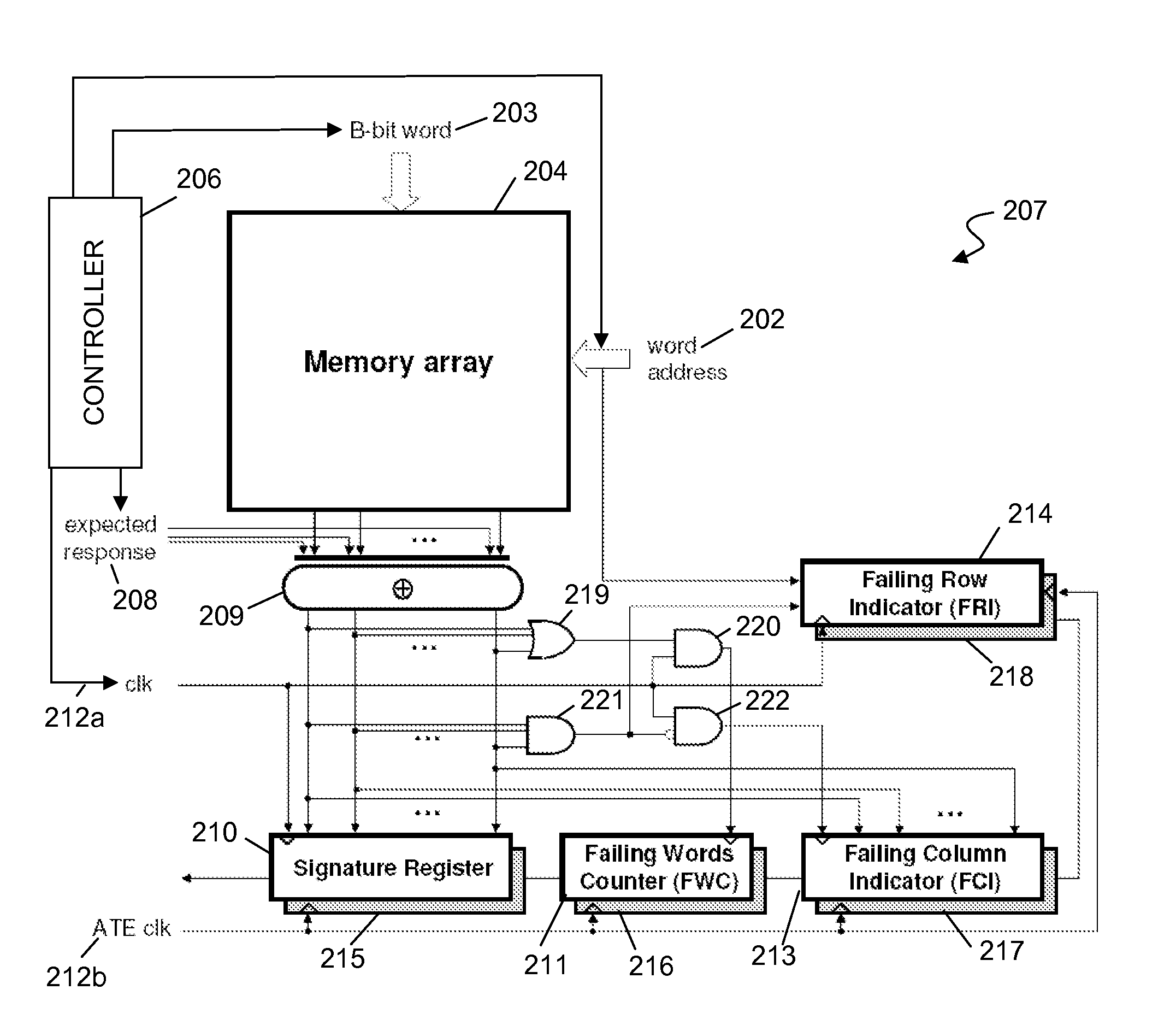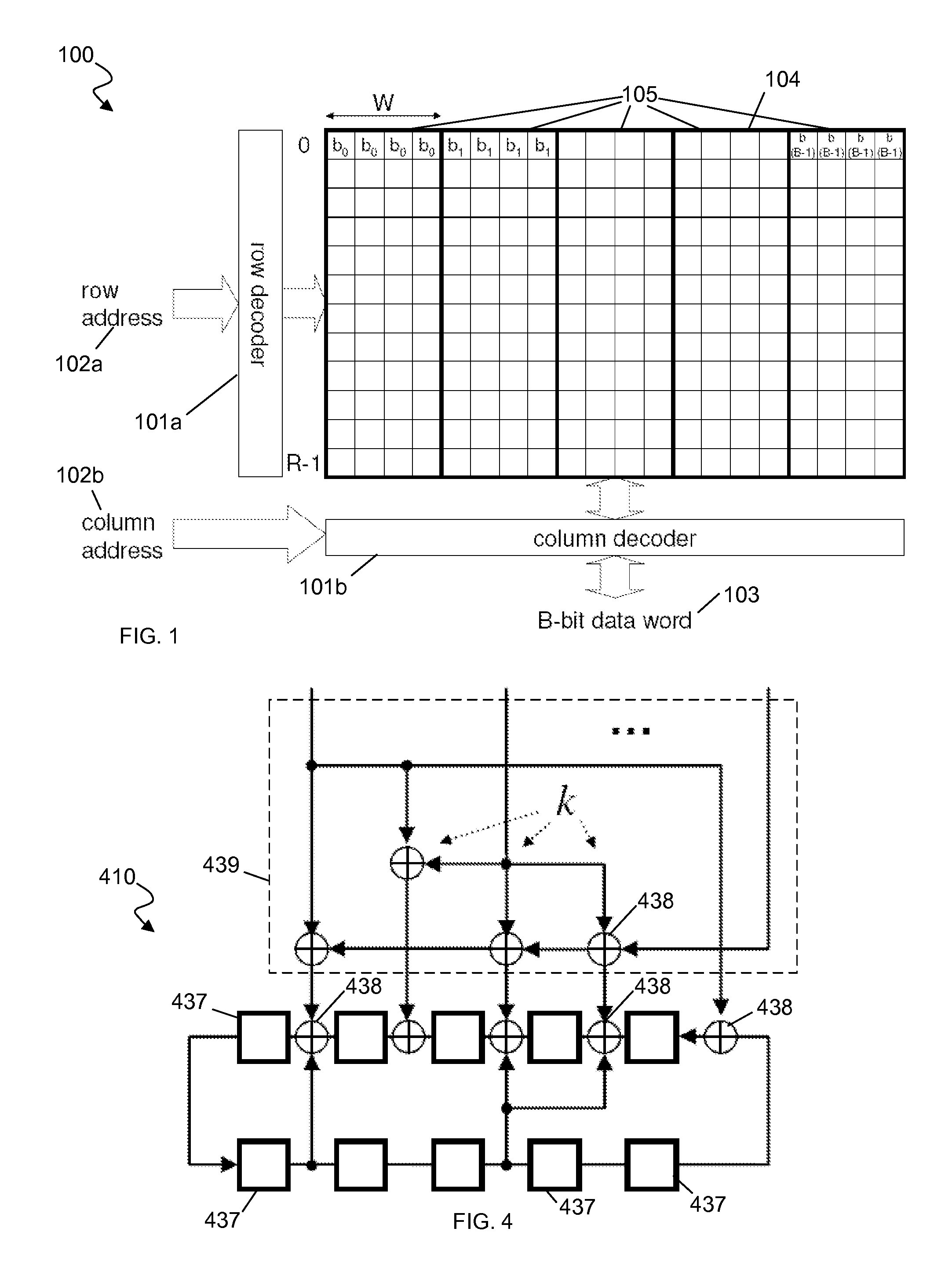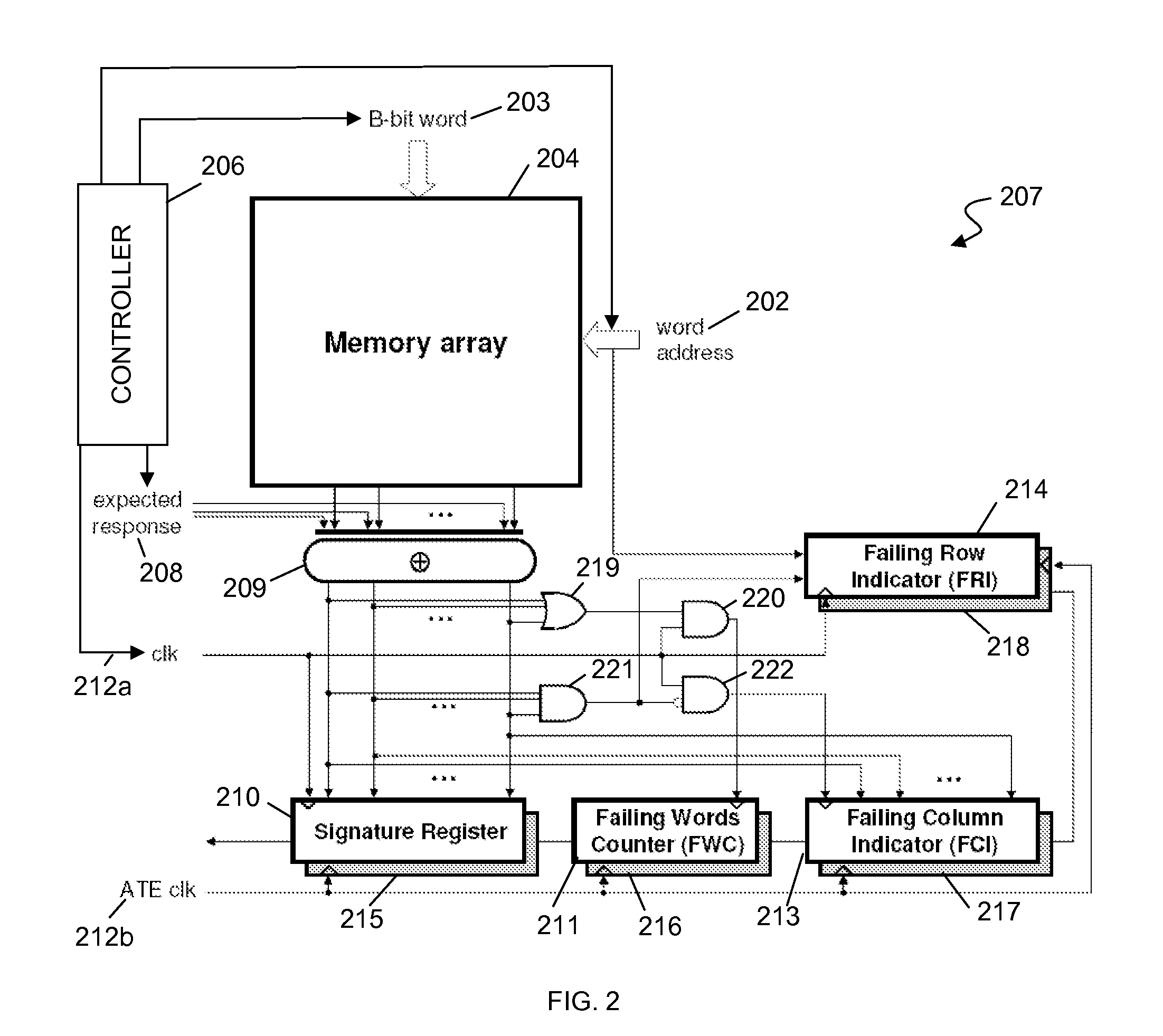Fault diagnosis in a memory bist environment
a memory bist environment and fault diagnosis technology, applied in the field of memory bist environment fault diagnosis, can solve the problems of many types of failures, time-related or complex read faults, and the difficulty of testing and diagnosing embedded memory systems, so as to reduce the time to transfer diagnostic data, speed up the extraction of diagnostic data, and recover failure data. the effect of safety
- Summary
- Abstract
- Description
- Claims
- Application Information
AI Technical Summary
Benefits of technology
Problems solved by technology
Method used
Image
Examples
example 1
[0116]Assume a single faulty cell cx produces the signature S(cx) 1654 in FIG. 16. FIG. 16 shows a signature register trajectory in a multiple input ring generator. In various embodiments, the reference distance Lref 1655 between the initial state (0 . . . 0001) and the state corresponding to the faulty rightmost cell c0 in the last row (R-1) is determined from its signature S(c0) 1656. This state can be obtained as a result of a single injection to the empty MIRG at input b1 (see FIG. 13). Next, the distance Lx 1657 between the initial state (0 . . . 0001) and the actual state of the MIRG is determined. The location of the faulty cell cx is x=Lx−Lref. 1658.
example 2
[0117]Consider a single column failure producing signature S(Cx). FIG. 17 illustrates a single column failure Cx and the reference column C. Here, the rightmost column C0 of a given vertical segment of the memory array assumes the role of a reference. Since the MIRG is a linear circuit, a signature representing the reference column S(C0) can be obtained by adding modulo 2 signatures produced by the faulty cells belonging to this column or stored in a LUT. Next, as shown in Example 1 above, the values of Lref and Lx can be determined, and subsequently the actual location of the failing column.
[0118]A second diagnosis method is referred to herein as a fast LFSR simulation. In this technique, the state, after a given number of clock cycles, of an LFSR that has been has been initialized with an arbitrary combination of 0s and 1s can be determined in a time-efficient manner. Additional detail concerning this technique is provided in J. Rajski, J. Tyszer, “Primitive polynomials over GF(2)...
example
[0137]Assume that the ring generator has reached state wxyz=1110. Equations (3) yield the corresponding state of the Galois LFSR which is, in this particular case, equal to abcd=1001. This conclusion can be confirmed in a different way by performing an exhaustive simulation of the LFSR 2552 and RG 2511, as presented in Table 3. As can be seen, the RG state wxyz=1110 corresponds to the LFSR state abcd=1001 and vice versa.
TABLE 3LFSR and RG simulationLFSR state, abcdRG state, wxyz1.000110002.001000013.010000104.100001105.100111106.101111117.111111018.011110119.1110010110.0101101011.1010011112.1101110013.0011100114.0110001115.1100010000011000
Look-Up Table of Failing Patterns
[0138]The grouping into classes shown in Table 2 can be used to set up a look up table for failing patterns where the lookup table uses FWC, FCI, and FRI values to determine the failing patterns that may correspond to these location information values. Thus, in order to accelerate diagnostic procedures for the most ...
PUM
 Login to View More
Login to View More Abstract
Description
Claims
Application Information
 Login to View More
Login to View More - R&D
- Intellectual Property
- Life Sciences
- Materials
- Tech Scout
- Unparalleled Data Quality
- Higher Quality Content
- 60% Fewer Hallucinations
Browse by: Latest US Patents, China's latest patents, Technical Efficacy Thesaurus, Application Domain, Technology Topic, Popular Technical Reports.
© 2025 PatSnap. All rights reserved.Legal|Privacy policy|Modern Slavery Act Transparency Statement|Sitemap|About US| Contact US: help@patsnap.com



